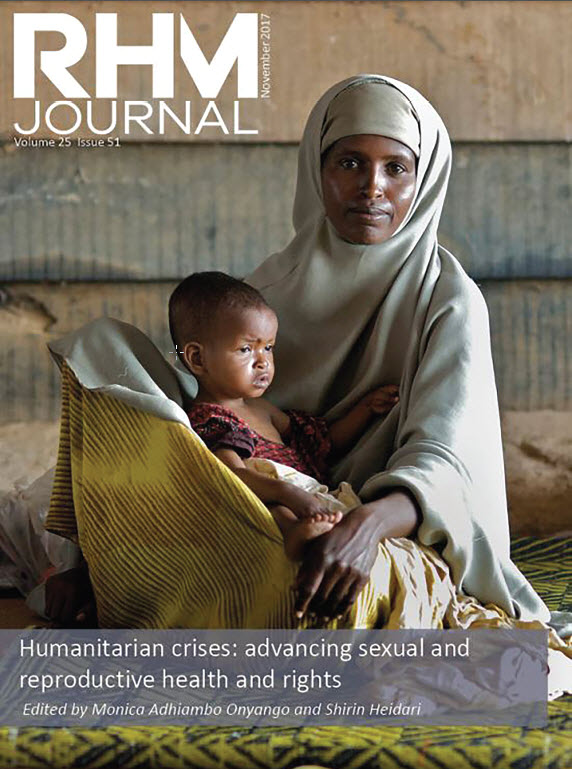Protecting safe abortion in humanitarian settings: overcoming legal and policy barriers
Women and girls are increasingly the direct and targeted victims of armed conflict and studies show that they are disproportionately and differentially affected. However, humanitarian laws, policies, and protocols have yet to be meaningfully interpreted and adapted to respond to their specific needs, including to sexual and reproductive health services and rights. In particular, safe abortion services are routinely omitted from sexual and reproductive health services in humanitarian settings for a variety of reasons, including improper deference to national law, the disproportionate influence of restrictive funding policies, and the failure to treat abortion as medical care. However, properly construed, abortion services fall within the purview of the universal and non-derogable protections granted under international humanitarian and human rights law. This commentary considers the protections of international humanitarian law and explains how abortion services fall within a category of protected medical care. It then outlines contemporary challenges affecting the realisation of these rights. Finally, it proposes a unification of current approaches through the use of international humanitarian law to ensure comprehensive care for those affected by armed conflict.
Introduction
Women and girls are increasingly the direct and targeted victims of armed conflict and studies show that they are disproportionately and differentially affected.1 Furthermore, sexual violence in today’s armed conflicts is systematically used against civilians to demoralise, destroy, terrorise, and even change the ethnic compositions of entire communities. These shifts in the face of war require effective responses in humanitarian protocols, laws, and practices. Nowhere is this need more apparent than in the need to mainstream and systemise sexual and reproductive health (SRH) services in conflict-related humanitarian settings.
While SRH services in humanitarian settings, including in response to sexual violence, encapsulate a range of care, from HIV prophylaxis to wound care and STD prevention, one service is worth singling out – abortion. Today girls and women, including those who become pregnant from rape, in conflict settings are routinely denied abortions with devastating consequences. While there are a multitude of reasons why safe abortion services are not currently available in the majority of humanitarian settings (including abortion stigma, attitudes amongst humanitarian actors, and restrictive donor policies), a frequently cited reason is restrictive abortion laws.2 However, relegating abortion services to the confines of national laws fails to take into account the full framework of laws governing the provision of care to those affected by armed conflict, such as international humanitarian and human rights laws.
The availability of abortion services is also hampered by the fact that many humanitarian organisations do not consider abortion to fit into the realm of the care that they administer.2 This view is slowly changing due to the pervasiveness of sexual violence in conflict zones and progressive donor policies that recognise the imperative to provide abortion services to victims of sexual violence in humanitarian settings, which are discussed herein.
Despite this progress, the restrictions on humanitarian aid are as potent as ever. The Helms Amendment and President Trump’s reinstatement and expansion of the Global Gag Rule have resulted in collective confusion, chilling effects on speech, and the further obstruction of abortion services. As the largest funder of global health assistance, the far-reaching impact of these combined US policies will have deadly consequences for women around the world. Thus, there is an urgent need to clarify the legal framework defining the rights of women and girls to medical care in conflict situations, including to safe abortion care.
This commentary addresses the gap in abortion services in SRH care in conflict-related humanitarian settings. It first shows that abortion services fall within a category of medical care that is protected by the international community’s strongest legal framework. It then outlines contemporary challenges affecting the realisation of the rights protected by this framework. Finally, it proposes a unification of current approaches to ensure comprehensive care for female victims of armed conflict.
Read the ‘Protecting safe abortion in humanitarian settings: overcoming legal and policy barrier‘.
